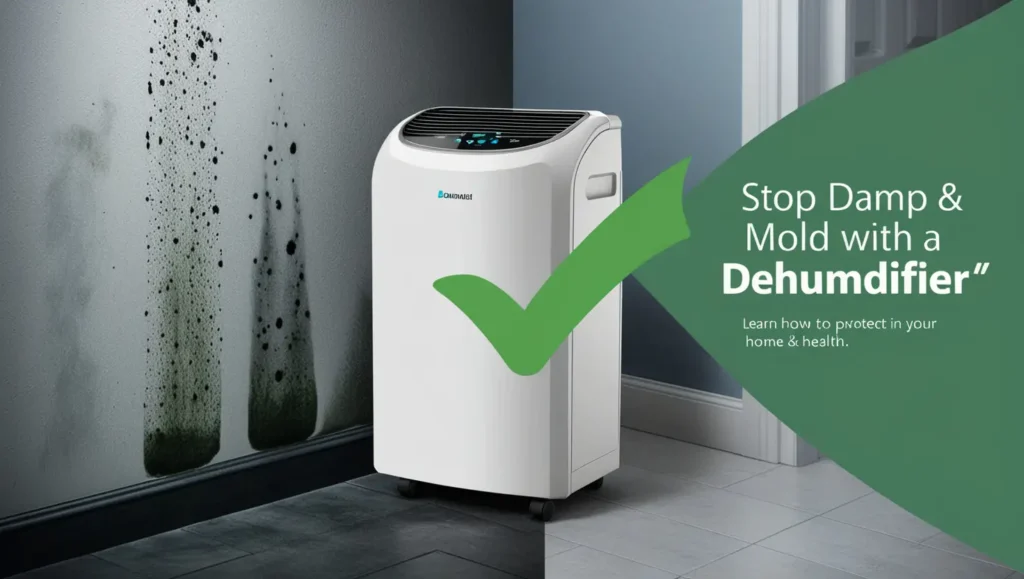How a dehumidifier can help with dampness & mold
If your room has a mold issue, then only using a dehumidifier will not solve your problem. First, you need to clean all the mold with mold removal spray. After cleaning all the mold, now use the dehumidifier. If you use it properly it will make sure that mold will never grow at your place. Damp & Mold affect our place because of highly humid areas and dehumidifiers absorb the water from the air to reduce the humidity level in our place.
dampness & mold are the most common problems people face because of high humidity issues. Humidity requirements are different depending on the usage. For pharmaceutical and industrial areas, humidity requirements are different and for homes, 45%-50% is the ideal humidity. But in any place, if the humidity level is 60% or more, then your place will be affected by dampness & mold. The dehumidifier doesn’t allow Damp & mold by reducing humidity in the room. But if your home is already affected by mold & damp then you need to use mold removal spray.
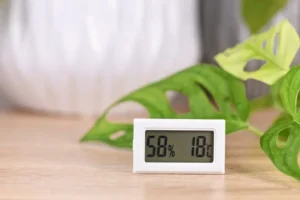
To avoid dampness & mold you need to get control over the humidity in your home, to do this first you need to know the humidity level of your home. I suggest you to buy a hygrometer or humidity sensor from Amazon. On it, you can easily see your room’s humidity level. In different rooms, humidity levels can be different. The toilet, kitchen & swimming pool areas have the highest level of humidity. If your home doesn’t have a good ventilation system, you will face damp & mold-related problems.
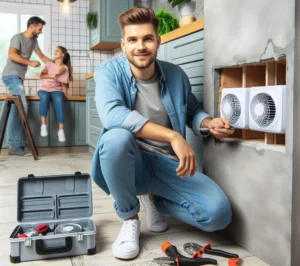
To save yourself, make sure you have an exhaust fan on the toilet and kitchen. And install a fresh air fan at your home. It will work like a magic spell. With a flexible duct line, you can easily supply fresh air in all rooms. You can set the fan to medium in winter and higher in summer. Don’t worry about cold weather, because in the market there are a lot of fresh air fans which come with a heater. After doing those things use a dehumidifier at your home and you will get the most effective result.
There are many reasons why you may have damp or mold. It could be caused by a problem from the outside such as a leaky gutter. Sometimes using a dehumidifier does not save you from higher humidity issues. There are certain criteria where using a dehumidifier will not save you from Damp & mold issues.
Years ago when I was in 9th class, I had a big problem with mold. I was living with my family. It was a two bedroom & one small room flat. The small room was mine and it was on the left side of the kitchen With a very small window. The ventilation was very poor because it was on the Ground floor and in front of that small window there were a lot of trees. My father took it because the rent was very low. The building was very old, the problem in my room was the water would run through the wall. So if it rained outside, that water would come straight through the wall and you’d actually see it dripping down and quickly everything in that room, all the furniture quickly got mold all over it. It was white mold and black mold and it was disgusting. My little sister was 6 years old at that time, which was even more worrying. I was worried about her health because obviously these things are very bad for her health. it can cause all sorts of breathing difficulties and things and even illness. So we tried using a dehumidifier at the time to control the humidity and it did not work because there was way too much water in the air as it was literally just coming through the wall. And so the dehumidifier couldn’t get all of that water out of the air quick enough to actually fix the problem, but also it was an ongoing thing. The reason water was coming through the wall was the way that the fire exit outside was built. So the fire exit, it was stairs that go down and it goes along and basically what’s happening is the rain was raining onto the fire exit and it was splashing up onto our exterior wall. This was making it wet all the time and maybe there was some sort of structural problem that was causing the water to come through as well. So the dehumidifier in this situation did not work. because the problem had to be fixed from the outside. We did call the council and they didn’t help us because to fix that problem and that would’ve cost way too much money. After 2 months we changed that home.
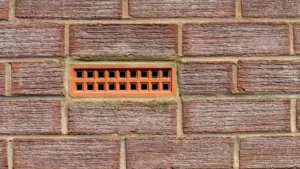
If the humidity level is higher at your place then you should use mold-resistant paint at your home. If any room has lower fresh air then use a small hole in the doors or use air-bricks. If you already have mold then remove it by using mold removal spray.
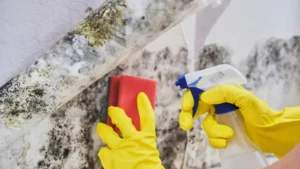
after cleaning the mold use a dehumidifier, so that you never get those issues again. dehumidifier doesn’t remove mold, it makes sure that mold can’t grow in a clean house.
damp & mold effects on health:

Damp and mold aren’t just ugly, they can affect our health. Breathing in a room which has damp & mold can cause allergies, stuffy noses, or even asthma attacks. Kids and older people, or it will be very harmful for those people who have weak immune systems.
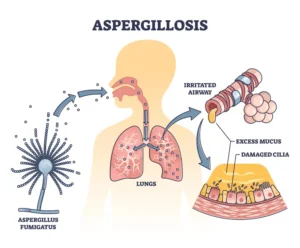
Because of it, you can suffer from cough that won’t quit. Mold can make your wall weak.
How to choose the right size dehumidifier for Home:

Well, there are so many things to consider when it comes to choosing the right size dehumidifier for Home. But I don’t want to start calculations here. After all it is just for the Home, not for any chips & dry fruit factories or pharmaceutical industries.
For Home, you can take a 30-pint dehumidifier for 500 to 1500 square feet,
50 pint for 1000 to 1500 square feet,
and 70 pint is for a high moisture level room over 1500 square feet.
Best location and position for your dehumidifier:
To get the best place to install the dehumidifier, you should install the dehumidifier near the power supply area where water easily can’t reach. Also choose a place where you can easily connect the drain pipe.
If you know where the moisture is coming to your Home then install the dehumidifier near that place.
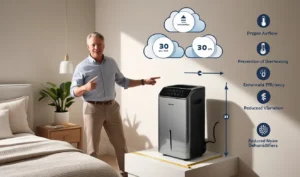
Before placing the dehumidifier, make sure there is a 30 cm gap between the wall and the dehumidifier. Otherwise, air circulation issues will happen. Also after the air gets pushed by the wall, it will try to return to the dehumidifier. This can be a cause of overheating and because of that, your compressor will get damaged.
Water drain system for dehumidifier:
For water drains, there are a few options. You can physically change the collected water from the dehumidifier. Also, you can connect a drain line with it and then connect the drain pipe with the drain line. At home, no one will visit from time to time to change the water manually. So connect a drain line that can constantly drain all the water.
There are other options like pump motors. By using a pump motor you can drain water through the basement to the Ground floor. If your situation demands an additional pump motor, in that case, a lot of models on the market now provide inbuilt pump motors on dehumidifiers. But they are not reliable, so try to go for an additional one. They are more long-lasting and relatable.
In which capacity you need to operate the dehumidifier to avoid damp & mold :
You can set 45/50 on your dehumidifier. This is the standard for areas like the Home. Because 40 is too high and 60/65 is too low.
If you are in a high moisture area, Then you can set it to 40/45. At night if water stacks on your window due to condensation, then on night set it on 38/40%. On those particular periods, you can set 40 on the dehumidifier. But generally, 45/50 is the preferable setting.
Compressor type dehumidifier or desiccant type dehumidifier, what should you choose for damp & mold?
There are two kinds of dehumidifiers, compressor/refrigerant type and desiccant type. For the Home area, we use a compressor/refrigerant type dehumidifier but In low temperatures, this kind of dehumidifier doesn’t work well. Here I am giving you an example of why a compressor-type dehumidifier doesn’t work well in cold places.
Why compressor or refrigerant-type dehumidifier doesn’t work well in cold places:
Imagine you have two Homes with similar moisture/humidity levels, Home A and Home B. The temperature of Home A is 30 degrees Celsius & Temperature of Home B is 17 degrees Celsius. And you are using a 50 Pints/day capacity dehumidifier in those two Homes. You will notice that in Home A the dehumidifier is working well, Because it has a higher temperature. In the meantime, the dehumidifier in Home B is not working well, because it’s working in very low capacity. Also if you run it for a day, you will notice that the Home B dehumidifier is freezing up & stops working. Because its temperature is very low.
It’s happening because, the refrigerant dehumidifier works with the refrigeration cycle, the chilled liquid refrigerant gas flows through the evaporator. During this process the evaporator gets colder than the Home temperature. When Home moisture air comes to the evaporator, a heat exchange happens between them due to the temperature difference. Here the evaporator absorbs the heat from Home air and the moisture in the air gets cold and heavier by losing heat. Because of that, the cold heavy moisture is stuck to the evaporator and then it collect in the water pot of the dehumidifier.
But in cold weather, the moisture in the air is already cold. When this cold moisture comes to the evaporator, heat exchange happens much less compared to a high-temperature area. Because of that in cold areas, refrigerant/compressor-type dehumidifiers work in very low capacity.
And if the temperature of your area is very cold, then cold moisture can freeze-up over the evaporator.
In that condition you should go for a desiccant dehumidifier.
Nowadays every dehumidifier company tests their dehumidifier in low temperatures
(18 degrees Celsius/65°F). So that the maximum ability of a dehumidifier can be tested. Before that, they were tested dehumidifier in 26°C/80°F. By doing this companies can find out that, in low temperature what kind of issues can happen. And they add a lot of different modes for batter control even if the dehumidifier gets frizz-up.
Desiccant Dehumidifier:
The desiccant dehumidifier is completely different from the refrigerant dehumidifier. Basically, a desiccant dehumidifier uses silicon gel to absorb moisture from the air. Silicon gel can absorb water up to 40% of its weight. The main component of a desiccant dehumidifier is the desiccant rotor. The desiccant rotor in the dehumidifier rotates slowly. When the process air/bathroom air goes through the desiccant rotor, the silicon gel in the desiccant rotor absorbs the moisture from the air. This stuck water goes out by a different process.
If the house is too big and it has an existing HVAC system and ductwork, then you can run it with the HVAC system.
First install the dehumidifier, then connect the return duct line with it and then another duct line from the dehumidifier needs to connect with the indoor unit. So that the dehumidified air can go to the indoor unit and after getting cold it can go back to the room.
It can operate in areas where the temperature is very low. It’s a simple, practical, and easy-to-use device to control humidity in the Bathroom. It provides more efficiency, control and reliability compared to the refrigerant type dehumidifier.
There are some disadvantages also, like it is hard to install, you can’t easily change the location of it and in the beginning, it costs more.
It is mostly used for industrial areas where maximum control over humidity is needed and places where the temperature is less than 18/17°C.
When and why the filter of the dehumidifier needs to be changed:
The filter of the dehumidifier needs to be cleaned every 4/5 days. Because it gets dirty quickly. If the filter gets dirty, then the airflow will slow down which will affect the performance of the dehumidifier. Because it will not get enough air to remove the moisture. Due to those reasons, the blower fan of the dehumidifier will run faster than its regular speed. Which is the cause of more electric consumption.
To reduce it you should keep your home clean. If you see that the HEPA filter is getting black after long use, then just change it. There can be germs and viruses on it. This can make your home unhygienic.

